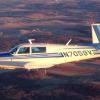Post LASIK Medical Requirements
-
Members Online
- MikeOH
- bcg
- jafffree
- Ragsf15e
- mooney_flyer
- Shadrach
- Skyland
- Rmfriday
- EricJ
- Lptoro
- NickG
- Pasturepilot
- Coachella Bravo
- Sue Bon
- LANCECASPER
- Hector
- Parker_Woodruff
- Kelpro999
- 00-Negative
- ToddCC22
- 802flyer
- SKI
- cferr59
- Niko182
- spaceman39a
- Rmnpilot
- Jan B.
- Neshi
- cbarry
- Epatry
- ericrynehess
- MatthiasArnold
- richardbrochu27
- Rwsavory
- OR75
- Jbguns24
- IvanP
- Trogdor
- TCC


Recommended Posts
Join the conversation
You can post now and register later. If you have an account, sign in now to post with your account.